Depth Of Field, Wild Life Safari, Bangkok

|
• Legend Hotel Saigon • Liberty 2 Que Huong Hotel • Liberty 3 Que Huong Hotel • Liberty 4 Que Huong Hotel |
Feature Photograph

This week's feature photograph is easily recognizable as one of the popular structures at Angkor Vat Cambodia. I like this photograph as it’s both technically and compositionally perfect (near). In fact, when cropping it I induced slight imperfections in the horizon level and centering because I like leaving a bit of food on the plate. The real significance however is how I captured this “perfect picture” and what I had to go through to get it.
When I visited Siem Reap it was the rainy season and I went there during this time because it was the rainy season. Most photos I’ve seen of this particular view have a white washed out sky, little depth or dimension, and they all looked the same. I wanted the perfect picture and I planned at least 14 days n Siem Reap so I could pursue my vision. Each morning I woke up at 0200, showered and dressed, checked my equipment, and met my driver outside the hotel. By 0400 I’d be on site, have my tripod set up with the camera mounted, and would sit there chatting with my driver till the sun came up. By arriving at 0400 I’d arrive before the crowds of tourists and thus be able to stake out the best position. By the time 0500 rolls around the tour buses have dropped off a few loads, cars have pulled up, and there are perhaps 150-200+ tourists standing there with you waiting for sunrise. I’d do the same in the afternoon, arriving at 1600 two hours before sunset.
By the fifth day all I’d seen were cloud covered drab days without the appearance of the sun at either sunrise or sunset. The morning once again disappointed me and here I was at almost 1800 looking at the same drab scene after already standing there for almost two hours. Suddenly I felt a bit of warmth on my neck and turning around I saw the clouds start to part and about 30 seconds later parted to reveal the sun poking through. A strong direct light came from behind me and lit up the structure with a golden tone that took my breath away. A few more holes in the cloud cover developed, and a beautiful reflection of the structure appeared in the still waters of the small lake. All this time I’d had my hand on the remote shutter release, the camera set, and as I pressed the release I knew I had the perfect picture I’d waited for. Pleased with myself I straightened up and looking around I saw 200+ tourists with small $200 compact point and shoots looking at the perfect picture on their small LCDs! I smiled, sometimes you work very hard for a shot, some times a shot just happens.

The above shot “just happened.” Right place at the right time. I captured it in Angkor Vat as well. I’ve made several versions in color, black and white, and even went back and made an infrared version. I love this scene. The next time I visit Angkor Vat I’ll rent a dozen monks and space them out in their bright orange robes from the near to far end of the path. I can’t wait.
Weekly Photo Outing
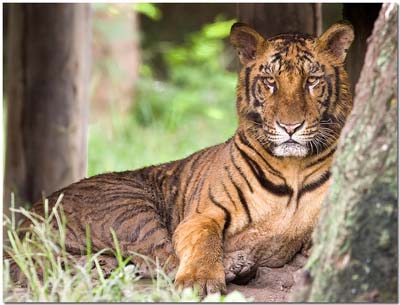
This last week we visited many places and the one that stood out was Safari World in Bangkok. It’s close, not crowded in the least, and if you go on a cloudy day with some rain you’re bound to get some great pictures of active animals. With the cloud cover providing a soft light and blocking the harsh rays, and if you’re careful to have the sun at your back, the images are certain to turn out well.
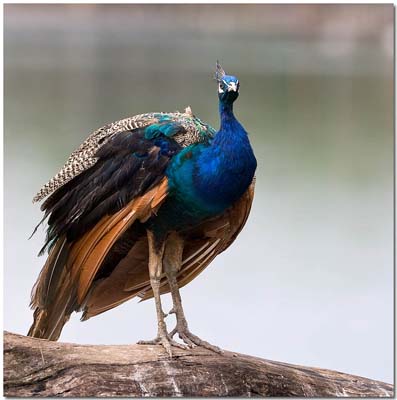
For 300 baht per adult (30 baht discount for Thai citizens or work permit holders) you can drive your own car at your own pace throughout the park stopping where and when you want, you can go around several times, basically you can do things any way you want. I tend to turn on the radio softly, release my safety belt so I can move around easily, and I mount my 300mm F2.8 IS lens. A 70-200mm lens would also be adequate for the animals, or a wider lens for landscapes.
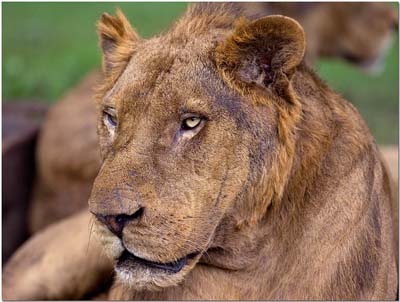
There are some major small lakes, small ponds, and sea birds everywhere. The animals roam around free in large areas, sometimes segregated, which you can drive through.
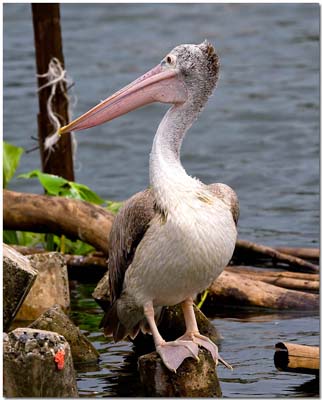
Sea birds can be very interesting and a few times a day a Safari World truck goes by and they dump several large barrels of fish for their meals. They’ll often fly in low in large numbers in spectacular fashion.
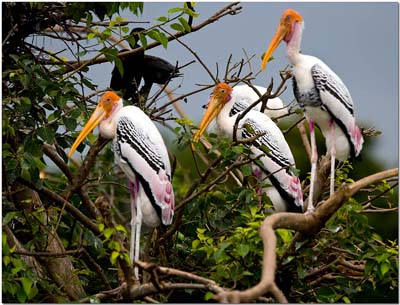
Even the bears roam around loose. On this trip there were maybe 15-20 bears, many of them playing or fighting, less than a few meters off the road. One was even laying in the road.
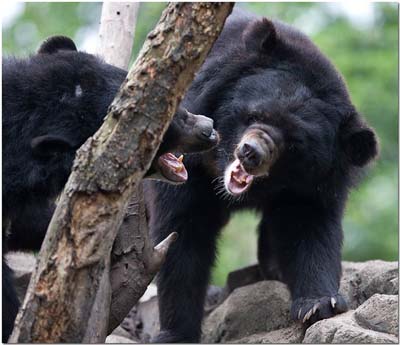
They sell expensive side window mount camera tripods for such places and they work well. I personally just roll my window down to a comfortable level and put a folded towel over it, and then rest the lens on the towel. If you take your time, ensure proper focus and exposure, and observe the animals behaviors for a few minutes so you can anticipate the best scenes.. you’re sure to get great images and have a great time. It’s especially satisfying that it’s so close and not much trouble to get to. Check out Safari World the next time you have a free afternoon and want to do something different. It’s one of the few local places that really is done well.
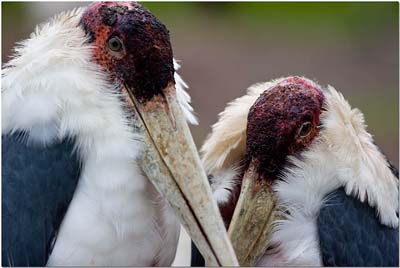
Depth of Field (DOF)
Proper and creative use of DOF is perhaps one of the single most useful tools for creating and forming your desired composition. I’ll be spending a lot of time in future columns demonstrating many different uses of DOF. In this weekly we are merely going to define DOF and discuss how we use the basic five variables to influence DOF to meet our desires during composition.
DOF simply refers to the portion of the scene which is in focus. If you have a person standing 20 feet in front of you, mountains in the far background, and a small fence in the foreground (ahead of the person) and the person is your main subject, then you will focus and expose on the person. When photographing any subject with eyes, be it humans, animals, birds, or fish.. you always select the closest (towards the camera) eye as the focal point. If that closest eye is in focus, then the image will look correct. Depending on the camera settings (aperture, shutter speed, ISO, focal distance and focal length) the scene will stay in focus from that closest eye outwards from just inches, to miles. How much of the rest of the scene stays in focus from your main focal point (closest eye) is totally dependent on the photographer and his/her desires via the choice of camera settings. That portion of the scene that remains in acceptable focus is referred to as the depth of field or DOF.
There is a series of mathematical formulas used to calculate DOF using the above five variables, and there are slide rulers made just for DOF, scales on the older lenses, and all kinds of aids have been created in the past to ‘help’ people understand and calculate DOF, but I find that each time I try to use one of these to help my students understand they get more confused than ever. Controlling DOF isn’t that hard to understand and I believe the best way simply involved a tiny bit of memorization and lots of experience. This is how it works in just a single sentence. Learn it, repeat it, and think about it when choosing your settings.
The wider (more open) the aperture, the closer (more near your subject) the focal distance, the greater (more magnification) your focal length, the LESS your DOF. This assumes the same size sensor in your camera. The size of the sensor also affects DOF which is why compact cameras seemingly have an almost unlimited DOF and you can never seem to get them to produce a decent shallow DOF. For instance you have two DSLR sensor sizes. APS size (14.9×22.3mm), and Full Frame (24x36mm) The full frame sensor is bigger which makes a more shallow DOF possible than with a APS size sensor. So, if you have for instance a Canon 20D DSLR using an APS sensor and you have a 135mm F2 lens mounted, and your settings are F2, 135mm, and you’re ten feet from your subject, and you have a Canon 5d with a full frame sensor with the exact same 135mm F2 lens mounted, and the exact same settings of F2, 135mm, and ten feet from the subject, you will have a significantly greater DOF in the image from the Canon 20D APS (crop) sensor, than from the Canon 5D full frame sensor. So, you can see that the size of the sensor or film plane directly and significantly affects DOF, but since we normally shoot from the same camera I’ll omit this variable from further discussion.
Lets look at some extreme examples. Below is an entire frame of an image I captured while down south interviewing the kris master. At first glance is appears nothing is in focus.
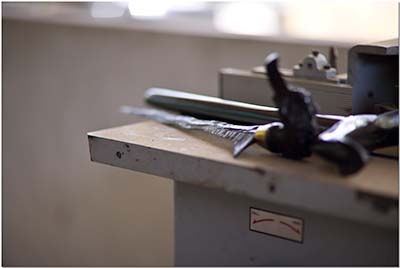
But look closely at this small crop of the image. Do you see the part of the blade that is in focus and very sharp? The “depth” of field for this image is approximately 1 inch! Not much at all. The image, as taken, is in focus! But at first glance you’d never realize it. For this image I used a full frame DSLR (sensor size large), a 85mm F1.2 lens (focal length), a F1.2 aperture (aperture), and a working distance of about 2 feet (focal distance) and produced an extremely shallow DOF.
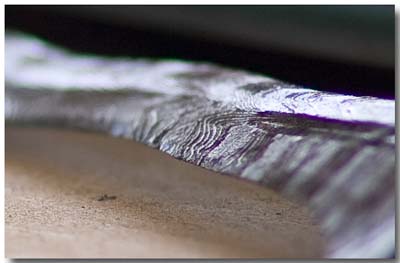
What about a more practical use? Take a look at the picture below. This was taken in a dark room near sunset with just a bit of light coming in through the window. I set the camera to properly expose his face and the settings were: DSLR (full frame), 85mm F1.2 lens (focal length), F1.2 aperture (aperture), and a working distance of about 10 feet. The DOF is still very shallow at roughly 5 inches, but it’s five times more than the above example. What variable changed in the scene? Yes, the working distance (focal distance) is the only variable that changed, from 2 feet to 10 feet, five times more. Do you see how the math works? You change one variable, and the other variables change the same degree.
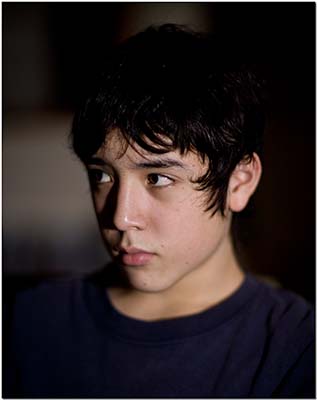
But was the image sharp at F1.2? Many experienced photographers will try and tell you that any lens at F1.2 will never produce a sharp image, but the truth is a F1.2 lens is highly specialized and requires a specific skill set to use correctly. Look at the image below and judge sharpness for yourself at F1.2.
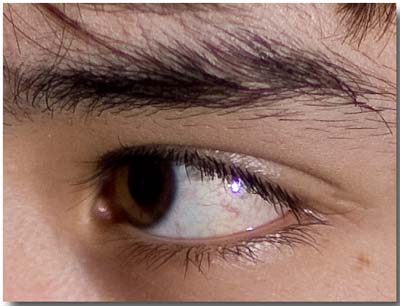
Lets take a look at this last image, a seaside scenic. Every part of the frame is in focus from the tiny yellow flowers which were actually touching the bottom hood of my lens to the furthest point across the bay. The settings were: DSLR (full frame), 17mm F4 lens (focal length), F16 aperture (aperture), and a working distance of at least 200 meters from the closest significant structure (focal distance). Because of the focal length and aperture, everything on either side of that focal point for miles was sharp and in focus.
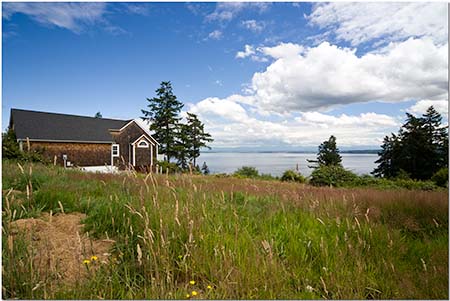
Once more for review. This is the one sentence you need to fully understand: The wider (more open) the aperture, the closer (more near your subject) the focal distance, the greater (more magnification) your focal length, the LESS your DOF.
Using this sentence you can substitute any single or multiple variable and know in which way you’ll affect DOF, the area of the frame which will appear in focus. You’ll see this material again and again in the future as we go over the many
techniques which take advantage of DOF.
Photography News of Interest
WOW! Photokina was in full swing this week and thousands of new products were announced or introduced. I won’t bore you by listing every item, but I will list a few items that promise to change the digital photography market for the better, hopefully. You can search this site for any news of recently announced items you may be interested in.
First is a new system introduced by Panasonic called the “Micro 4/3’s” system. They announced a interchangeable lens system based on this new standard which makes great promises in the “small and lightweight” department. This system provides the same interchangeable lenses as DSLRs, but with much less bulk and weight, exactly what travelers have been looking for in a high quality system. More, this system promises to put a big 4/3’s size sensor in a compact camera sized package, that will produce very near the same quality as a much bigger DSLR… in a package you can put in your shirt pocket!
Another possible huge change in the digital camera market might possibly come from Leica, a German camera company steeped in tradition and old time craftsmanship. They’ve been mostly silent over the last decade in the digital camera market as the industry leaders from the Japanese firms really took off and defined the market. Now, they’ve shown a prototype DSLR system which is about the same size as the current professional DSLRs, but with a sensor almost twice again as big and with double the megapixels! This will be a perfect high-end studio and architecture camera that will rival the image quality produced by the best medium frame digital backs, but with much more speed and flexibility inherent in a DSLR design. I’m estimating the retail price of the body only to be somewhere close to $30,000.00 USD’s and the lenses starting at $2000,00 and up. You can see the announcement here.
Photography is often used as a social messenger, but I wonder what they’re trying to say in Greece by adding swastika’s to the Greek flag in place of the white cross? Check it out here.
Now this is big news indeed! Almost 70 years ago Life Magazine was introduced as a featured image magazine aimed at photojournalist and I’m sure all of us can remember special issues that caught our imagination, and others that took our breath away. You probably noticed that since 2000 you haven’t seen a Life Magazine on the news racks? And for a few years after Life was only a newspaper supplement. Now LIFE is to be re-launched as a website and I can hardly wait! Read about it here.
Readers' Submissions
Hi Steve,
Here are a few photos taken in Chiang Rai at the beginning of 2007 with a Canon Powershot S2 IS. The first is of a resort on the kok river, the second is on a bridge overlooking a klong near the center of town, the third is of a Buddha somewhere in the town centre, the fourth is of a pickup full of kids going to a fair, the last is of Karen kids in a village just outside of town.
Regards
Khunkli

|

|

|

|
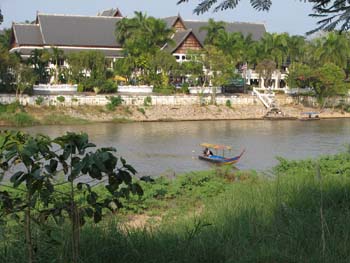
|
Khun Kit –
Nice photos! I really enjoyed these. Thanks for sharing, I look forward to seeing more of your work!
Steve
I suspect the readers submissions will be a highly anticipated section of this column and I encourage anyone with photographs and travel accounts they’d like to share to please send them to me at: QandA@Bkkimages.com
Readers' Questions
Khun BKKSteve –
I am buying a small compact camera at a local dealer and the dealer wants to sell me a “convenience kit” that has a flash memory card, extra battery, case, and some other things like lens tissues included. This kit is almost $100, do you think it’s worth it?
Thanks
Pat
Pat –
Thanks for the question, I’m sure this is one most of us have experienced in a camera shop at one time or the other. I’m very tempted to say to not do business with a shop who pushes these packages, but these days they seem very common. What usually happens is the dealer gets a great deal on certain items, packages them together at an extremely high markup, and markets them as a great package deal with huge discounts. This isn’t always the case though, sometimes the dealers just use their good fortune in finding a good deal on products to make a promotion package as at a great price available to their customers. You mentioned this kit was almost $100, so I’m sure it falls in the first camp. Try pricing these items separately and ask yourself if you really need all of the items in the package. I think you’ll find a much better value by shopping around yourself for only those items you want and need.
Happy Shooting!
Steve
Please submit your questions to QandA@Bkkimages.com All questions will be answered and most will show up in the weekly column.
A Snapshot of Bangkok Images Week in Review
This week continues to be busy with a current workshop visiting the Wildlife Safari in Bangkok, once again the Grand Palace, and a few street photography adventures. I’ve been trying hard to find the time to process some pictures and get some more galleries up and I’m pleased to announce two new galleries that went online this last week. Check them out here:
Wildlife Safari Bangkok here.
Floating Market Damnoen Saduak here.
Mirrored Blog
I haven’t had time to sort out my blog issue yet, but I hope to get to it week after next and to be able to bring you more of my archived blogs.



